Exploring the Storied Shores of Halkidiki's Hidden Peninsula
On the tranquil shores of the Athos peninsula and its islands, the aquamarine seas whisper of a place where time slows, stillness soothes and stories sway in the gentle Aegean breeze
As tourism across Greece continues to grow year-on-year, social media is awash with the latest claims of an ‘undiscovered’ destination. However, the tourism wave in Greece is far from even. It is sharply seasonal and deeply concentrated on Athens and a select number of Cycladic Islands – with Paros, Naxos and Milos the latest to be subsumed by the ‘euro summer’ trend of mass tourism.
For visitors who go beyond the increasingly crowded ferry lines between Piraeus and the Cyclades, an altogether more authentic experience awaits where the rhythms of traditional Greek life continue. The lesser known peninsulas of Halkidiki, named Sithonia and Athos, are areas that manage to balance touristic flows with continued authenticity and a natural beauty that could rival any other Greek destination. These areas are not empty of tourists – in fact, they are popular with Bulgarians, Romanians and other visitors from nearby Balkan countries. However, the peninsula remains absent from the tourist gaze of Northern Europe and America, sparing it from the rampant inflation of restaurant prices, sunbed rentals and transport costs that have prevented some Greeks from holidaying on their own islands.
In this article, I recount my recent experiences travelling on the Athos peninsula to offer up a different kind of inspiration for your next Greek escape. From Nea Roda to Ouranoupoli, hospitable locals, verdant hills, inviting beaches await. These are the tourist resorts that have maintained, at heart, a local base – the places where you can converse with residents, learn their stories and recognise familiar faces after your first day.
Furthermore, the area’s attractions go beyond the mainland to two Greek islands whose names remain unsaid in tourist circles. The islets of Ammouliani and Drenia promise exquisite beaches, authentic cuisine and a relaxing atmosphere without the overcrowded, expensive or arduous ferry journeys. If this sounds appealing to you, please read on to discover each of these destinations – not only as beach resorts, but as places whose stories linger in the conversations of locals, the aroma of traditional Greek dishes and the eternal ripples of the Aegean Sea. Athos, Ammouliani, and Drenia are not just alternatives to overcrowded Greek islands, but places with meaning, story, and soul.
Ouranoupoli
At the end of the road from Thessaloniki, Ouranoupoli serves as a transfer point for pilgrims wishing to make the journey towards the monasteries of nearby Mount Athos. Despite this, as one of the largest towns in the peninsula, Ouranoupoli offers a charming location, streets lined with abundant flora, clear waters and a selection of excellent bars, restaurants and bakeries. Given Ouranoupoli’s location close to the border with Mount Athos, the town is replete with Orthodox religious symbolism largely due to the array of shops selling icons to take advantage of the passing trade. Such a unique atmosphere creates the sense of a liminal space, existing in between the devout Orthodox traditions of Mount Athos and the trendy ‘cafe-bar’ culture of modern Greece.
The most recognisable landmark of Ouranoupoli, however, is its Byzantine Tower of Prosforion. The stone tower – built in the fourteenth century – is reminiscent of similar towers built across Halkidiki, but Ouranoupoli’s tower takes pride of place at the heart of the town where the settlement meets the sea beyond. Visitors can enter the tower for €5, where they can explore historical artefacts discovered in the area, learn more about the storied history of the tower from the Byzantine era to the twentieth century and enjoy spectacular views from the defensive windows on the highest level of the tower.
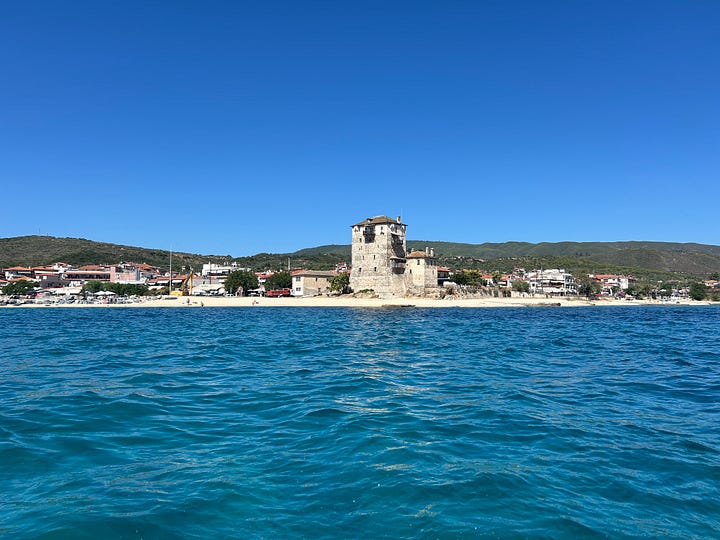
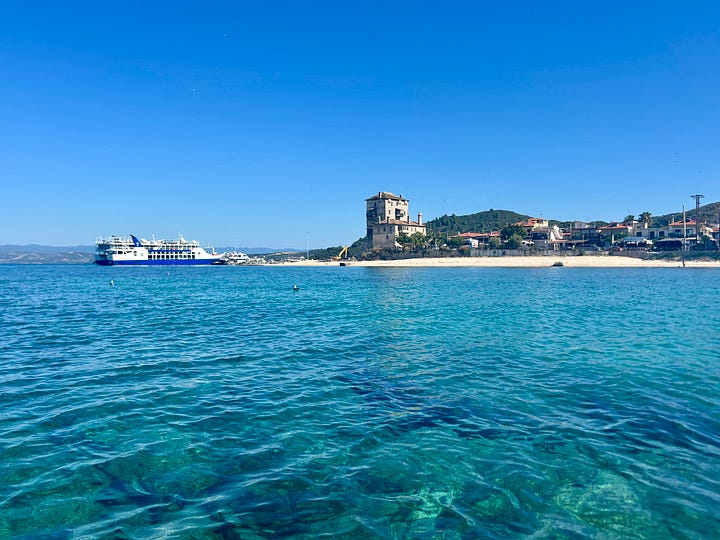
Like many of the towns of Halkidiki’s coast, Ouranoupoli was populated predominantly by refugees from Asia Minor in the 1920s. The town was expropriated by the Greek state from the administration of the Metochi Priests in order to accommodate the influx of ethnic Greeks from their villages across Turkey, with the tower initially being used to house the town’s new arrivals. The tower was also home to Sydney and Joice Loch, a couple who travelled to the area on a humanitarian mission to help those affected by the population exchanges of Asia Minor and the subsequent earthquakes. Visitors can learn more about this fascinating history, marvel at locally weaved rugs and explore rooms decorated by Joice Loch herself when exploring the tower.
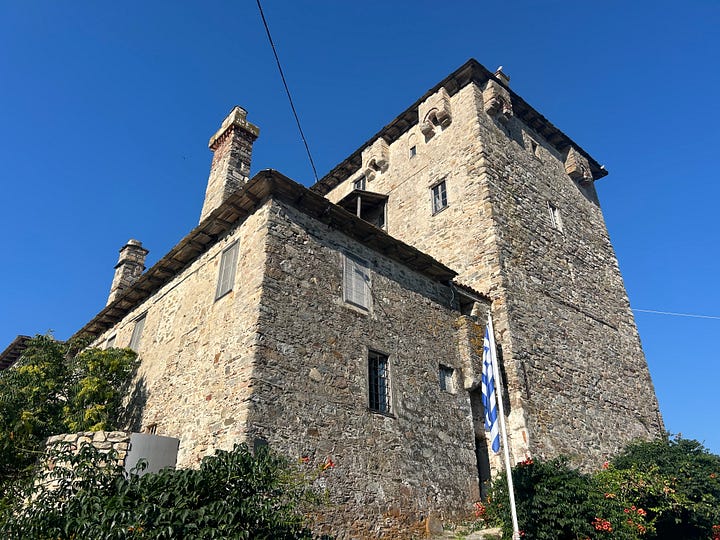

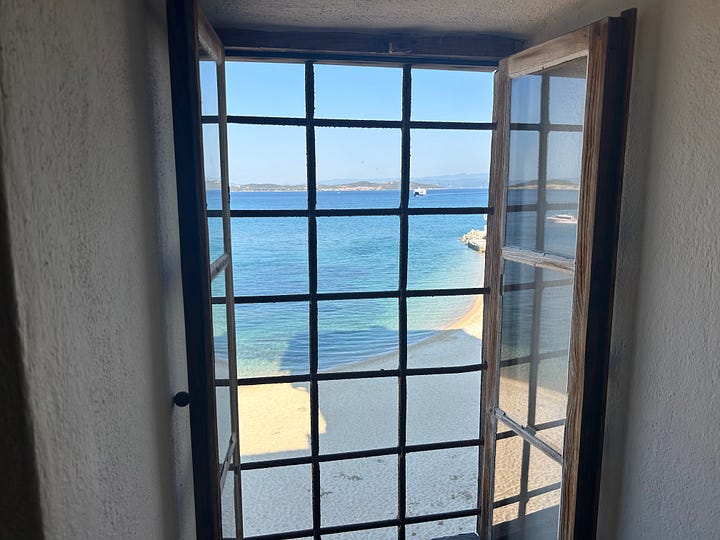
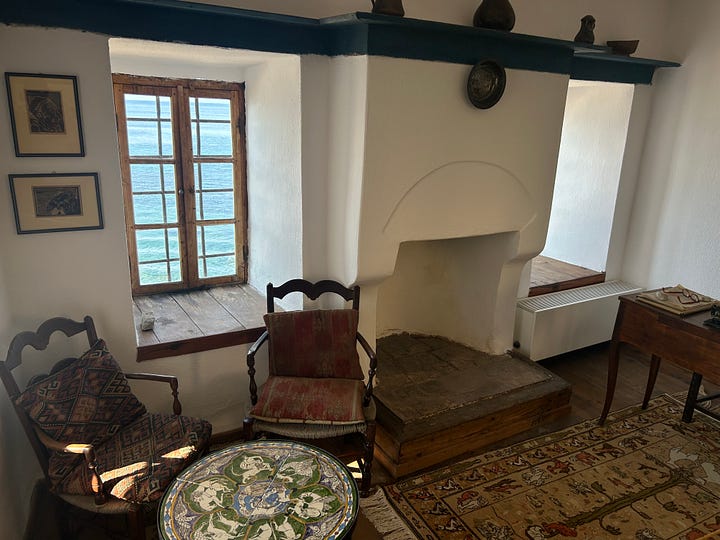
Ouranoupoli has a number of small beaches from which locals and tourists alike enjoy morning and evening swims, often set against the backdrop of the town’s emblematic tower. The contrast between the azure blue of the rippling waves and the steadfast stone of the tower is one that makes Ouranoupoli’s profile truly distinctive. The waterfront also offers a spectacular sunset, as the sun dips behind the layers of interlocking mountains of Northern Greece.
When seeking to enjoy the amber hues of dusk, a number of tavernas offer high quality food with fantastic views. Try The Golden Anchor for traditional Greek dishes and seafood, with its whitewashed terrace offering uninterrupted views of the sea. For a town institution, Lemoniadis is a traditional taverna established in 1957 with the aim of serving pilgrims passing through the town towards Mount Athos. Today, Lemoniadis blends tradition with more refined dishes and hospitable service; try the papoutsakia, arnaki stamnato or soutzoukakia for excellent local flavours before finishing with delicious ravani on the house. Throughout the day, Ammos Bar also offers excellent service ranging from breakfast and coffee to pizzas, burgers and cocktails. The bar often hosts live music, with a chic atmosphere looking on to the sea beyond.
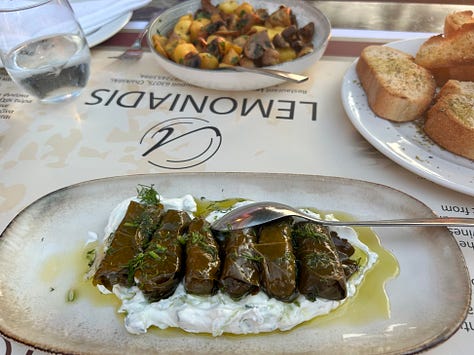


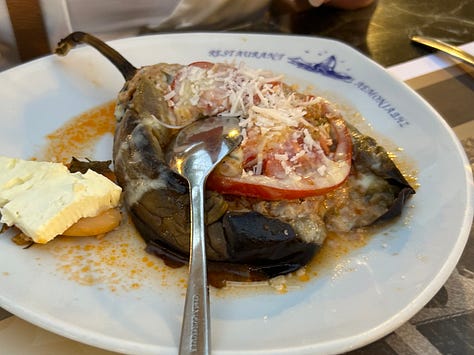
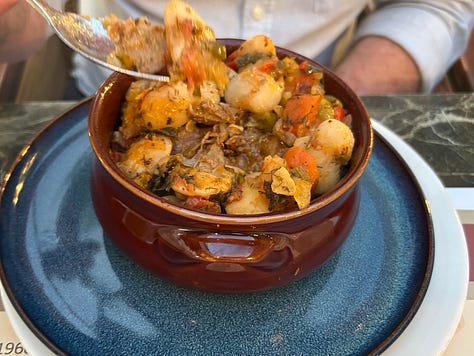

Drenia
The islands of Drenia lie scattered between the Halkidiki peninsula and the larger island of Ammouliani. Whilst there are many tours operating from nearby Ouranoupoli, one of the easiest, flexible and most memorable ways to experience these islets is by hiring your own boat from one of the many companies offering boat hire. For a warm welcome and reasonable prices, try Nemo Boat Hire located underneath the shadow of Ouranoupoli’s Byzantine tower. Less than fifteen minutes from the town, the islets of Drenia offer exclusive, paradisiacal beaches without the crowds or the price tag.


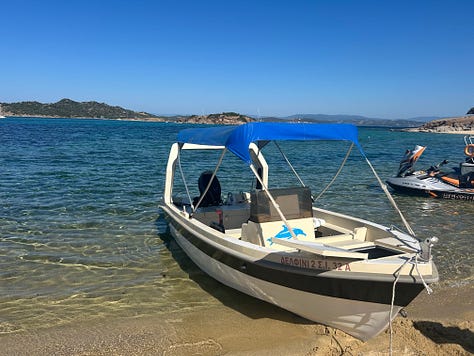
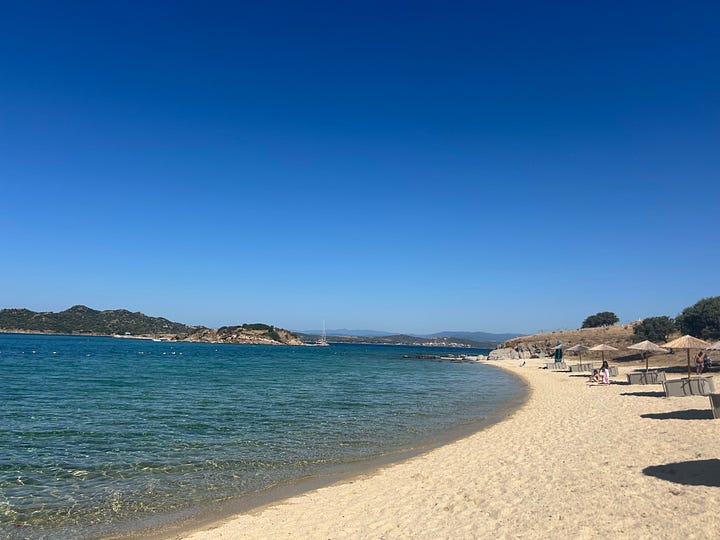

Known affectionately as the ‘Hawaii of Greece’, Drenia’s crystalline waters lap up against crescents of sandy beaches, with several beaches to choose from facing different directions and with different characters. The islands are uninhabited (save for the goats), but Drenia’s beaches do offer a limited number of sunbeds for those who wish to relax on these remote islands. Drenia’s islands are remote and exotic, yet easily accessible; a unique mix for the time-conscious visitor. Whilst some of Drenia’s beaches are more popular, those who prefer solitary sanctuary might even claim an islet entirely to themselves.
Ammouliani
Little known beyond Greece and the Balkans, Ammouliani is Halkidiki’s only inhabited island, offering a different sort of Greek island escape. The island was, once again, settled by refugees after it was bequeathed to communities fleeing Asia Minor in the 1920s. Today, with a picturesque town and exquisite beaches ringing the island, Ammouliani is encompassed by an easy-going atmosphere that makes it easy to love. The island can be reached either by hiring a small boat from the mainland, or by buying tickets for a frequent ferry service from the port of Tripiti to the port of Ammouliani. With a journey time of under fifteen minutes, ferry tickets cost around 3€ per person, with an additional charge for vehicle transport.

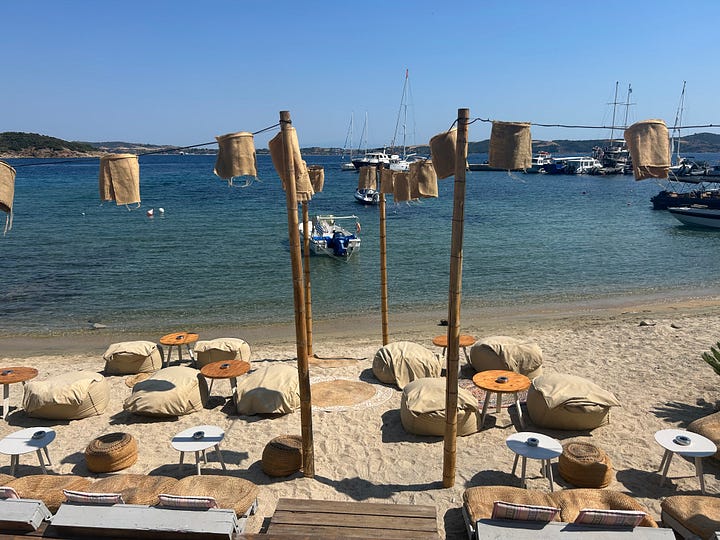
Ammouliani has a small main town with picturesque streets, boutique shops and tiered bars and restaurants rising from the port – ranging from coffee at Aelia to gyros at Sergiani. Many of these bars are stylishly furnished and set on the small town beach, creating the vibe craved by visitors to more popular Greek islands without the hordes of tourists. In the picturesque stone-built square of the main town, visitors can enjoy the local folklore museum and more traditional tavernas beyond the seafront.

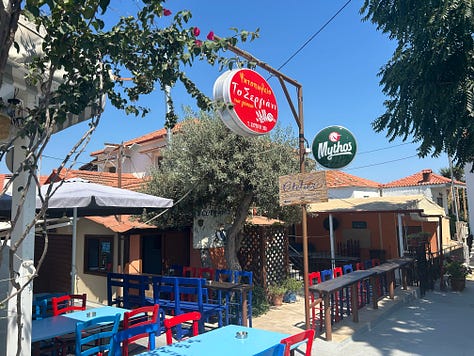

Elsewhere, the Tzanis taverna is one of the island’s most recognisable institutions, serving up restaurant quality food to beach-goers, boat skippers and local residents alike, with a refined ambience and sweeping views towards Mount Athos. Popular dishes here include bouyiourdi, with delicious tastes inspired by Ottoman-era cuisine emanating from Thessaloniki.


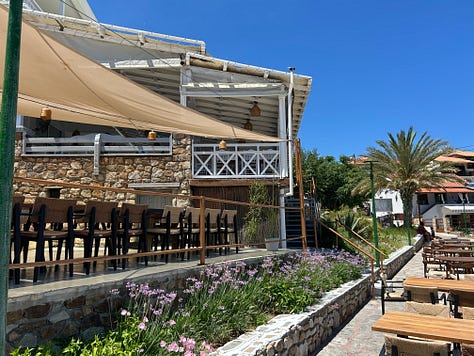
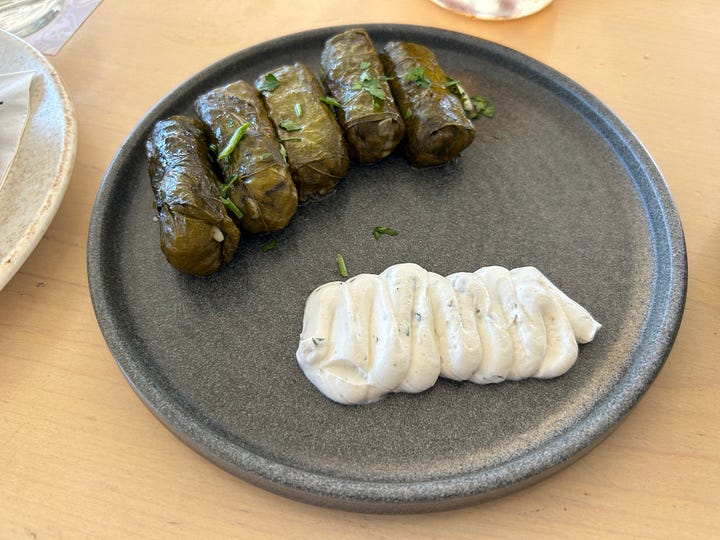

Beyond the town, the island’s coastline is blessed with some of the most striking beaches in Greece. Beaches such as Alikes, Agios Georgios or Megali Ammos all boast sweeping bays with shallow crystalline waters stretching far out to the horizon punctuated only by the dramatic landscapes of the Athos peninsula. Agios Georgios, with its stylish beach bars, converted windmill and excellent swimming opportunities stands out as one of the most impressive beaches I have visited across Greece.
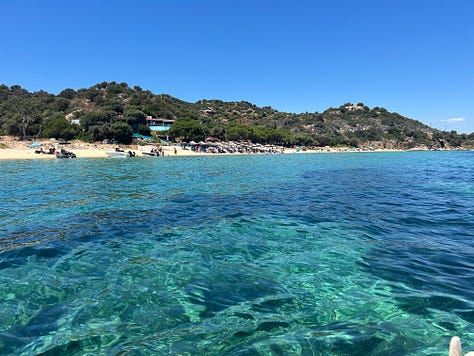



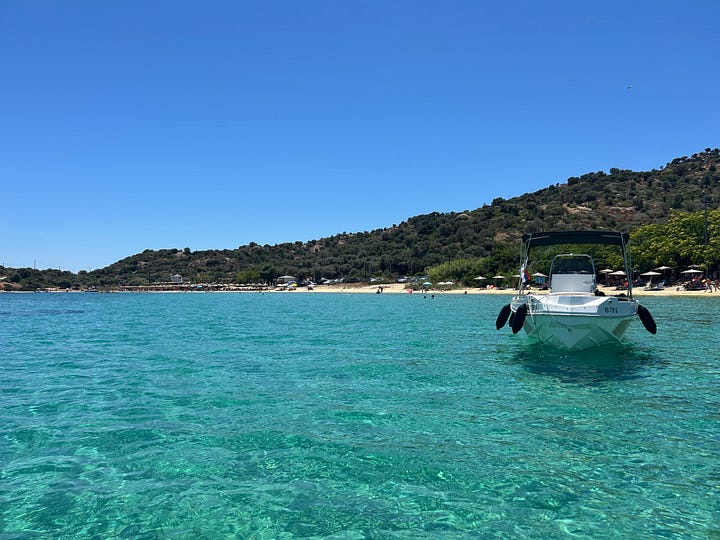
Moreover, visitors can enjoy the hospitality of excellent value family-run beach bars, with no sign of the spiralling costs of sunbed sets sparking debate across the Cyclades. Between its dazzling beaches, unassumingly pretty town and peaceful vibe, Ammouliani Island offers a hidden escape that is yet to be influenced by international mass tourism, with sun, sea, sand and stories awaiting on this enchanted isle.
Nea Roda & Beaches
Nea Roda is a smaller town on the Athos peninsula, offering a more authentic community feel that is unmistakably Greek in its hospitality. Nea Roda is the kind of place for chats with local residents in kafeneia, slowly sipping a frappe whilst overlooking the beach whilst the sound of children playing on the beach and yiayias chatting in their courtyards drifts upon the gentle breeze.
Nea Roda itself is an unassuming town, with a manicured waterfront promenade that invites visitors to stroll next to a range of trendy cafes, traditional tavernas and small boutiques. The promenade is pedestrianised throughout the day and evening, adding to the tranquil atmosphere of the village whilst also improving access to the town’s excellent beach with calm, clean and clear waters spanning both organised and unorganised stretches.



At the far end of the beach is an open-air theatre used for cultural events throughout the summer months, with a humble wooden sculpture placed along the coastline to honour the lost homelands of the refugees who settled this village in the 1920s. As a town constructed by its refugees, Nea Roda is enchanting and charming, with verdant gardens boasting of pomegranate trees originating from the erstwhile homeland of residents in modern-day Turkey. You can read more about these living migratory histories in my previous article:
Uprooting, Rerooting and the Migratory Histories of Halkidiki
In 1923, the Treaty of Lausanne was signed in the wake of inter-communal violence across the Balkans and the conclusion of the First World War. As the longest living of all the peace treaties signed in the early twentieth century, the enduring impact of Lausanne remains socially, culturally and politically profound. One of the most significant products …
For eating and drinking, Nea Roda offers a selection of options with attentive service in beautiful surroundings. For breakfast or lunch, Myky Bar is a popular choice offering both seating and sunbeds along with excellent coffee, free shots of ouzaki (even with breakfast!) and complementary watermelon – all set against the backdrop of incredible sea views.
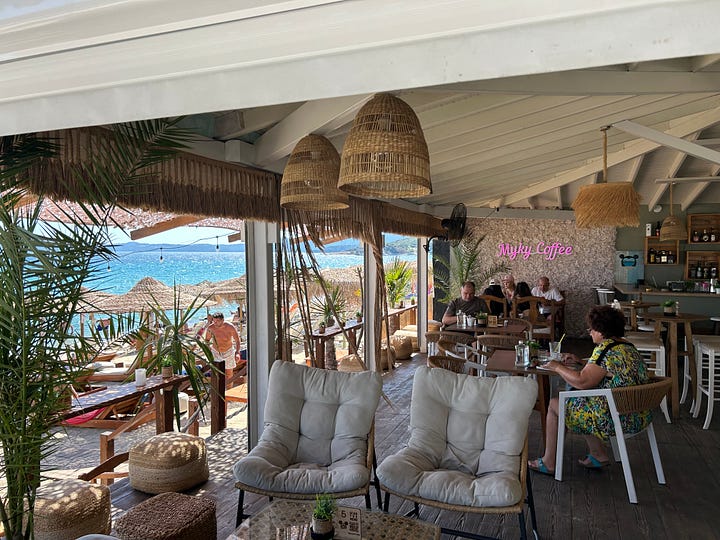

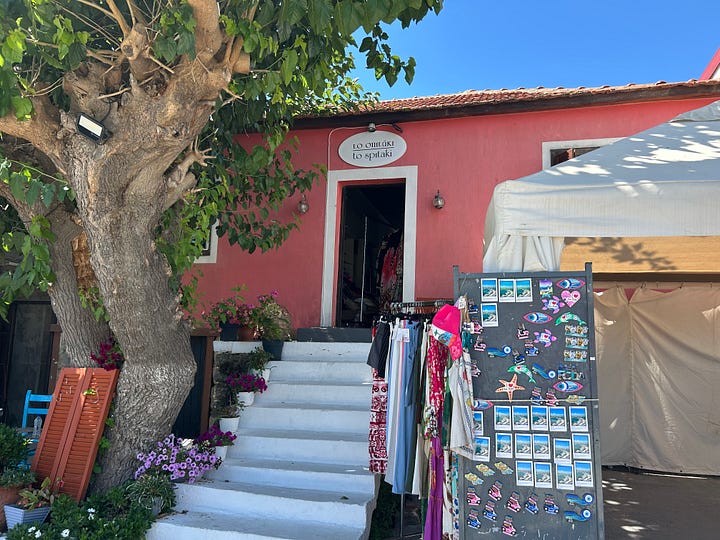

In the evening, a local resident recommended either Ploton or Molos taverna, both situated along the seafront. I tried Molos, a family establishment with warm and friendly service, fresh sea food and an island-like atmosphere. The sunset from the seafront tavernas of Nea Roda was particularly captivating – it is worthwhile to spend one evening dining here.
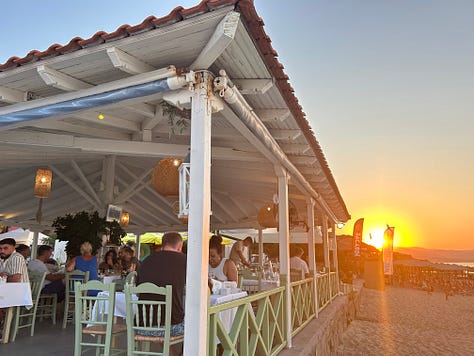


Nearby, there are also a variety of more remote beaches and coves including Komitsa and Voulitsa Beach. Both of these beaches have parking, bars and changing facilities but feel much more remote than the town beaches of Nea Roda. These beaches have a vibe of escapism whilst only lying ten minutes away from Nea Roda by car.
Where To Stay
In Ouranoupoli, there are numerous accommodation options that suit all tastes – from classic hotels, to apartments and guesthouses. In the town centre, Pyrgos Boutique Hotel offers well-appointed rooms with a small pool less than five minutes’ walk from the centre of town.
For those who seek a more authentic and personable experience, Rizes Hotel provides stylish and spotless apartments with exquisite views towards Drenia and Ammouliani and welcoming hospitality from the manager, Evangelia.
Nea Roda offers a more limited number of accommodation options, but Meltemi Luxury Apartments provide visitors with an excellent location and tastefully decorated rooms.
In Ammouliani, the Ilianthos Hotel is situated in the town’s historic main square opposite the town hall and folklore museum, with characterful rooms and outdoor seating.





